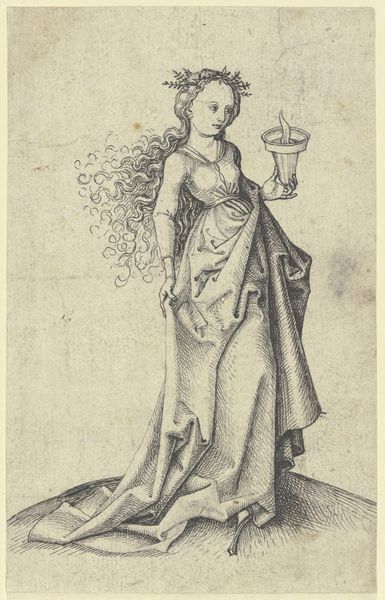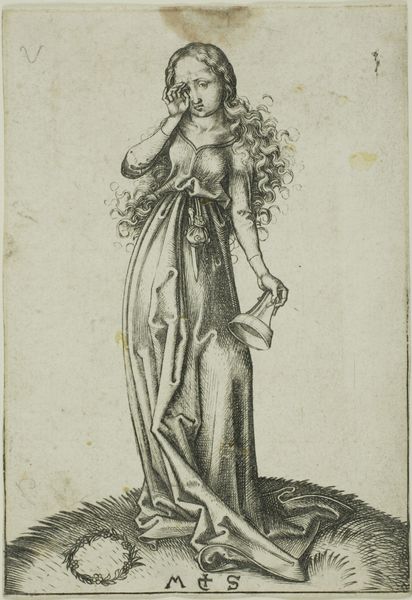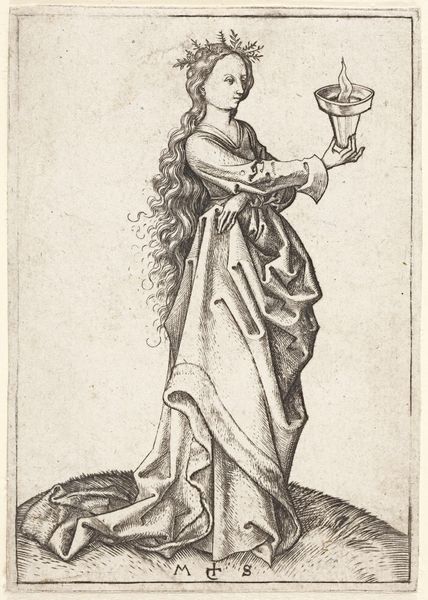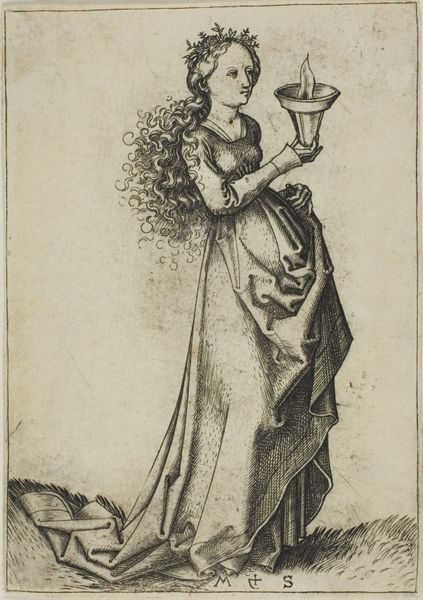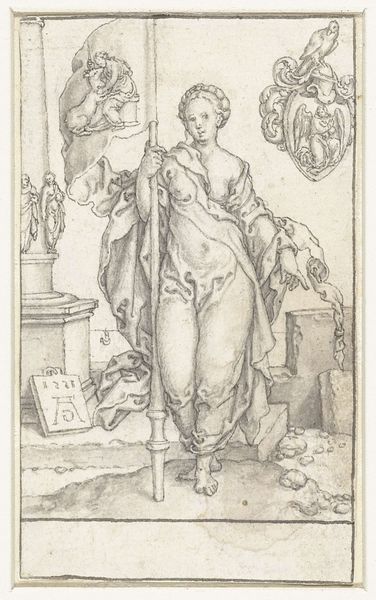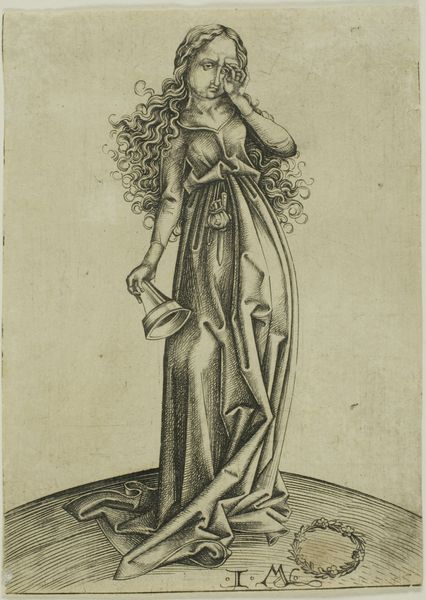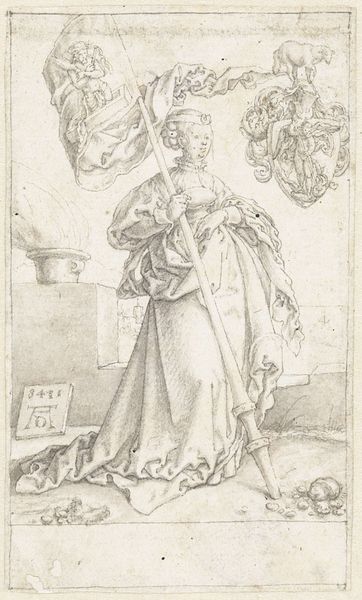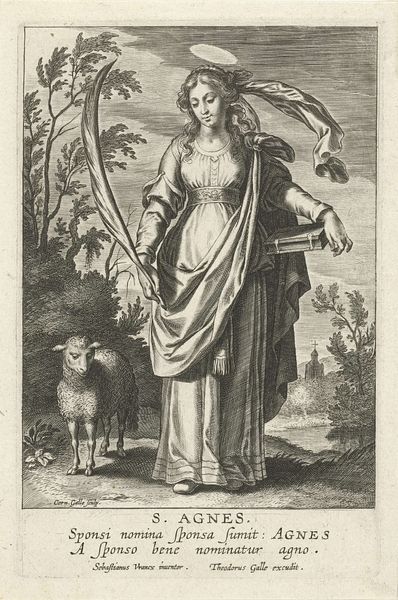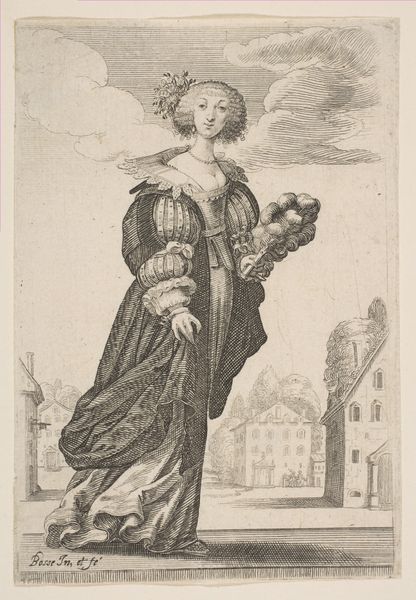
print, etching
#
portrait
#
medieval
# print
#
etching
#
figuration
#
line
#
northern-renaissance
Dimensions: height 119 mm, width 85 mm
Copyright: Rijks Museum: Open Domain
Editor: This is Martin Schongauer's "The Second Wise Virgin," created sometime between 1470 and 1491. It's an etching, so a print. I’m immediately struck by her stillness and the contrast between her delicate features and the heavy folds of her drapery. What do you make of it? Curator: I see a complex interplay between the personal and the political, filtered through a potent symbolic vocabulary. It’s key to remember the socio-political conditions influencing Schongauer. Can you guess what could have influenced the artwork's meaning and reception? Editor: Well, the "wise virgins" are from the Bible, right? So, religious and moral instruction. But there's also something regal about her. Curator: Precisely. This isn't just about individual piety. Consider the patriarchal structures of the late 15th century, the expectations placed on women. The 'wise virgin' becomes a loaded signifier. The light she carries isn’t just spiritual; it could also represent knowledge, agency...but contained and channeled according to societal expectations. The control of female knowledge and autonomy are important. Do you think this resonates in our own world? Editor: Definitely! I mean, we're still grappling with issues of female representation and who gets to control whose story is told. It’s also very cool to think of what these images mean for male identities too and how they might have felt impacted by this! Curator: Exactly! It opens up further possibilities, doesn't it? We can consider this artwork as not just a representation of religious morality but also a historical artifact reflecting societal anxieties around gender, power, and knowledge. Editor: This gives me a new way of thinking about older artwork. Thanks!
Comments
No comments
Be the first to comment and join the conversation on the ultimate creative platform.
